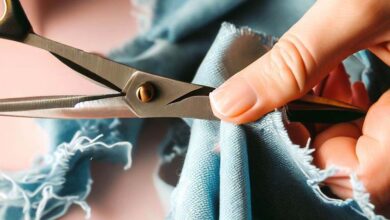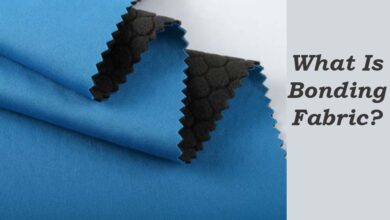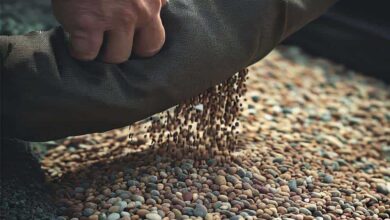What is Cationic Fabric? Unveiling The Secret Of This Fabric

The Cationic fabric has been gaining popularity in the textile industry for its unique properties and versatility. But what exactly is cationic fabric?
In simple terms, it is a type of fabric created using cationic dye, a positively charged substance that bonds with the negatively charged fibers of the fabric. This unique dyeing process gives cationic fabrics distinctive characteristics and sets them apart from other textiles.
Cationic fabrics are known for their vibrant colors and excellent color fastness. The positive charge of the cationic dye allows it to bond strongly with the negatively charged fibers, resulting in intense hues that are resistant to fading.
For more details, scroll down.
What Is Cationic Fabric?
Cationic fabric is a type of fabric that has gained popularity in the textile industry due to its unique characteristics. It is created using a special dyeing technique that involves using cationic dyes, which have a positive charge.
This positive charge allows the dye molecules to easily bond with the negatively charged fibers, resulting in vibrant colors and excellent colorfastness.
How Is Cationic Fabric Made?

Cationic fabric is a type of textile that is formed using a specific dyeing process. Unlike traditional fabrics, cationic fabric dyes the fibers before they are woven into a fabric. This unique dyeing technique gives the cationic fabric its distinct characteristics and properties.
Here’s how cationic fabric is made:
Dyeing process:
Cationic fabric is created through a process called cationic dyeing. In this process, the dye used is a cationic dye, which is positively charged. The fabric fibers, typically polyester or nylon, have a negative charge.
When the cationic dye is applied to the fibers, it is attracted to the negatively charged surface of the fabric. This electrostatic attraction allows the dye to bond with the fibers, resulting in a permanent color fastness.
Pre-treatment:
Before the dyeing process, the fabric undergoes a pre-treatment phase. This pre-treatment involves activities such as cleaning, de-sizing, and scouring to remove any impurities or substances that may hinder dye absorption. It ensures that the fabric is ready to receive the dye effectively.
Dye bath:
After the pre-treatment, the fabric is immersed in a dye bath containing the cationic dye. The dye bath is maintained at a specific temperature and ph level to optimize the dye absorption.
The fabric is then immersed in the dye bath for a designated period, allowing the dye to penetrate the fibers and create a bond.
Washing and finishing:
Once the fabric has absorbed the dye, it is washed to remove any excess dye and impurities. Various finishing processes may be applied to enhance the fabric’s properties, such as softening agents for a smooth touch or water-repellent finishes for added functionality.
Drying and cutting:
After washing, the fabric is dried thoroughly to remove any remaining moisture. Once dry, it is ready for cutting and further processing into various textile products like clothing, upholstery, or accessories.
Cationic fabric’s unique dyeing process results in vibrant, long-lasting color and enhanced color fastness, making it an attractive choice for a wide range of applications. Its ability to retain its color even after multiple washes sets it apart from other fabrics and makes it highly desirable in the textile industry.
Key Characteristics Of Cationic Fabric
Enhanced color fastness:
Cationic fabric is renowned for its excellent color retention. The fabric is dyed using a special process involving positively charged dye molecules attracted to the negatively charged fibers. This results in deeper, more vibrant colors that resist fading even after repeated use and washing.
Soft and luxurious texture:
Cationic fabric offers a luxurious feel and touch. The fibers used in its production undergo a treatment that enhances their softness and smoothness. This makes cationic fabric an ideal choice for garments, upholstery, and other applications where comfort is paramount.
Moisture-wicking properties:
Thanks to its unique fibers, cationic fabric has excellent moisture-wicking properties. It efficiently removes moisture from the body, keeping the wearer dry and comfortable. This makes it suitable for sportswear, activewear, and other applications that require moisture management.
Wrinkle and shrink resistance:
Cationic fabric is known for its resistance to wrinkles and shrinkage. It maintains its shape even after multiple washes, making it an ideal choice for durable and long-lasting clothing items.
Uses Of Cationic Fabric
Apparel:
Cationic fabric is widely used in the fashion industry for various apparel items. Its vibrant colors, soft texture, and excellent performance make it a popular choice for clothing, including shirts, dresses, skirts, and activewear.
Additionally, its moisture-wicking properties make it suitable for undergarments and sportswear.
Upholstery:
Cationic fabric is also commonly used in upholstery applications. Its luxurious texture and colorfastness make it a preferred option for upholstery fabric used in furniture, cushions, and curtains.
Whether in homes, offices, or hotels, cationic fabric adds a touch of elegance and durability to any space.
Accessories:
Cationic fabric is not limited to clothing and upholstery. It is also used in the manufacturing of various accessories. From bags and wallets to hats and scarves, cationic fabric provides accessory designers a versatile and stylish choice.
Automotive industry:
The cationic fabric has found its way into the automotive industry. It is used for car seat covers, door panels, and headliners. Its durability, colorfastness, and resistance to wrinkles and shrinkage make it an excellent material for automotive applications.
Cationic fabric offers a range of desirable characteristics, including enhanced color fastness, softness, moisture-wicking properties, and resistance to wrinkles and shrinkage.
Its versatility makes cationic fabric used in various industries, including apparel, upholstery, accessories, and automotive. Its exceptional performance and aesthetic appeal make it a sought-after choice for those looking for quality and style in their fabric selections.
Is Cationic Fabric Safe?
The cationic fabric has gained popularity recently for its unique properties and appeal in fashion and performance apparel. But you may be wondering, is cationic fabric safe?
Let’s explore some key points to understand the safety aspect of this fabric.
Antibacterial And Hypoallergenic:
Cationic fabric is known for its antibacterial properties, which inhibit the growth of bacteria on the fabric’s surface. This can be beneficial, especially for active or sports apparel that may accumulate sweat and odor.
The hypoallergenic nature of the cationic fabric makes it less likely to cause skin irritations or allergies. It is gentle on the skin, making it suitable for individuals with sensitive skin or allergies to certain fabrics.
Chemical Composition:
Cationic fabric is primarily made from synthetic fibers such as polyester. These fibers are chemically treated with cationic dye, resulting in the fabric’s characteristic coloration.
The chemicals used in the dyeing process of cationic fabric are generally safe for human use. However, it is essential to ensure that manufacturers follow proper regulations and guidelines to minimize potential chemical risks.
Compliance With Safety Standards:
Like any other fabric, cationic fabric must comply with safety standards set by regulatory bodies. These standards ensure that the fabric is free from harmful substances and meets specific safety criteria.
Before purchasing cationic fabric products, it is advisable to check if they have undergone testing and certification from reputable organizations or comply with recognized safety standards.
Cationic fabric is generally safe for use in various applications. Its antibacterial and hypoallergenic properties and proper adherence to safety standards make it a reliable choice for apparel and other textile products.
Just remember to follow care instructions and choose products from reputable manufacturers to ensure the safety and longevity of your cationic fabric items.
What Are The Benefits Of Cationic Fabric?
Cationic fabric offers numerous advantages due to its unique dyeing process using cationic dyes. With vibrant and long-lasting colors, this synthetic textile exhibits excellent color retention and resistance to fading.
Cationic fabrics feel soft and comfortable on the skin and possess inherent anti-static properties. These are easy to care for, wrinkle-resistant, and quick-drying, making them ideal for various applications.
They boast durability, making them suitable for sportswear and outdoor clothing. Additionally, some cationic dyeing processes can be more eco-friendly by requiring less water and energy during production.
However, it is essential to consider that cationic fabrics are derived from petroleum-based materials, which may have environmental implications.
Overall, the cationic fabric offers an attractive combination of aesthetics, functionality, and ease of maintenance for various clothing and textile products.
Care And Maintenance Of Cationic Fabric
Proper care and maintenance of cationic fabric can help preserve its appearance, softness, and longevity. Here are some tips to follow:
- Read the Care Label: Always check the care label on the garment for specific instructions. Follow the manufacturer’s recommendations to avoid damaging the fabric.
- Machine Wash with Care: Use a gentle or delicate cycle when washing cationic fabric. Wash it separately or with similar colors to prevent dye transfer. Avoid using harsh detergents or bleach.
- Temperature Consideration: Wash the cationic fabric in cold water or at a maximum of warm water. Avoid hot water, as it may damage the fabric and affect color retention.
- Avoid Aggressive Washing: Opt for a shorter washing cycle to minimize wear and tear. Avoid heavy agitation, which can lead to pilling or fraying.
- Use Mild Detergents: Choose mild or pH-balanced detergents to maintain the fabric’s softness and color vibrancy.
- Skip Fabric Softeners: Fabric softeners can leave a residue on cationic fabric, affecting its performance. Avoid using them during washing.
- Air Dry or Low Heat: Hang or lay flat cationic fabric to dry, preferably in the shade. Opt for a low heat setting to prevent shrinkage or damage if using a dryer.
- Avoid Ironing: Cationic fabric is typically wrinkle-resistant, but if ironing is necessary, use a low heat setting or iron inside out.
- Store with Care: Store cationic garments in a cool, dry place, away from direct sunlight, to prevent color fading and moisture damage.
- Handle Stains Promptly: Treat stains immediately using a mild stain remover or spot-cleaning method. Avoid rubbing vigorously to prevent fabric damage.
By following these care and maintenance tips, you can extend the life of the cationic fabric and keep it looking its best for a long time. Always remember to refer to the garment’s care label for specific care instructions.
What Is The Difference Between Cationic And Polyester?

Cationic fabric is a type of textile that has gained popularity in recent years due to its unique properties and versatility. If you’re unfamiliar with cationic fabric, it can be confusing to understand how it differs from polyester.
This section will delve into the key differences between cationic and polyester fabrics, highlighting their distinct characteristics and applications.
Cationic fabric:
- Cationic fabric is made by combining two different types of fibers, typically polyester and cotton.
- The fabric undergoes a special dyeing process that involves positively charged cationic dyes.
- This dyeing method allows the fabric to absorb the dye more effectively, resulting in vibrant colors that are resistant to fading.
- Cationic fabric is known for its excellent colorfastness, making it an ideal choice for garments that require long-lasting, fade-resistant colors.
- The fabric also exhibits a unique lustrous appearance, giving it a luxurious and visually appealing quality.
- Cationic fabric is lightweight, breathable, and offers good moisture-wicking properties, ensuring comfort during physical activities.
- It is commonly used in sportswear, swimwear, outdoor gear, and athleisure clothing.
Polyester fabric:
- Polyester fabric is a synthetic textile made from petroleum-based fibers.
- It is produced through a process called polymerization, where individual molecules are bound together to form long chains.
- Polyester fabric is durable, wrinkle-resistant, and retains its shape well, making it suitable for a wide range of applications.
- It is known for its quick-drying properties, making it ideal for activewear, outdoor gear, and swimwear.
- Polyester fabric is often blended with other fibers, such as cotton or spandex, to enhance its stretch, breathability, and overall performance.
- It is widely used in the fashion industry for its affordability, versatility, and ease of care.
- Polyester fabric is also commonly found in home furnishings, such as curtains and upholstery.
While both cationic and polyester fabrics offer distinct advantages, they differ in terms of their production methods, dyeing processes, and properties.
Cationic fabric stands out with its vibrant colors, superior colorfastness, and luxurious appearance, making it a preferred choice for fashionable and durable sportswear.
On the other hand, polyester fabric is highly versatile, durable, and quick-drying, making it a go-to option for various applications ranging from clothing to home furnishings.
Frequently Asked Questions On What Is Cationic Fabric?
How Does Cationic Fabric Differ From Regular Fabric?
Unlike regular fabric, cationic fabric is made using a specialized dyeing process. Regular fabric is typically dyed after it has been woven or knitted, whereas cationic fabric is dyed during the fiber manufacturing stage. This creates a unique look and feel for cationic fabric.
Is Cationic Fabric Suitable For Sportswear?
Yes, cationic fabric is suitable for sportswear. It has moisture-wicking properties that help to keep the wearer dry and comfortable during physical activities. Additionally, cationic fabric is known for its durability and ability to retain its shape, making it an ideal choice for sportswear garments.
Can Cationic Fabric Be Used For Upholstery?
Yes, cationic fabric can be used for upholstery. Its unique aesthetic and durability make it a popular choice for furniture upholstery. Cationic fabric is also known for its resistance to fading and staining, making it a practical option for upholstery in high-traffic areas.
Conclusion
Cationic fabric is a unique type of fabric that offers numerous benefits in today’s ever-changing textile industry. Its ability to repel odors, resist static electricity, and enhance dye absorption make it a popular choice for various applications.
Whether it’s for athletic wear, bedding, or upholstery, cationic fabric provides the perfect combination of comfort and functionality.
Its electrostatic properties have proved to be a game-changer, ensuring a static-free experience and reducing the build-up of unpleasant odors. Moreover, cationic fabric’s ability to absorb and retain vibrant colors ensures long-lasting beauty and durability.
As the demand for performance-driven textiles continues to grow, the cationic fabric is set to become an essential component in creating innovative and high-quality products that meet the needs and expectations of today’s consumers.
So, the next time you’re looking for a fabric that offers exceptional performance, consider choosing cationic fabric for a perfect blend of style and functionality.
Read More:



